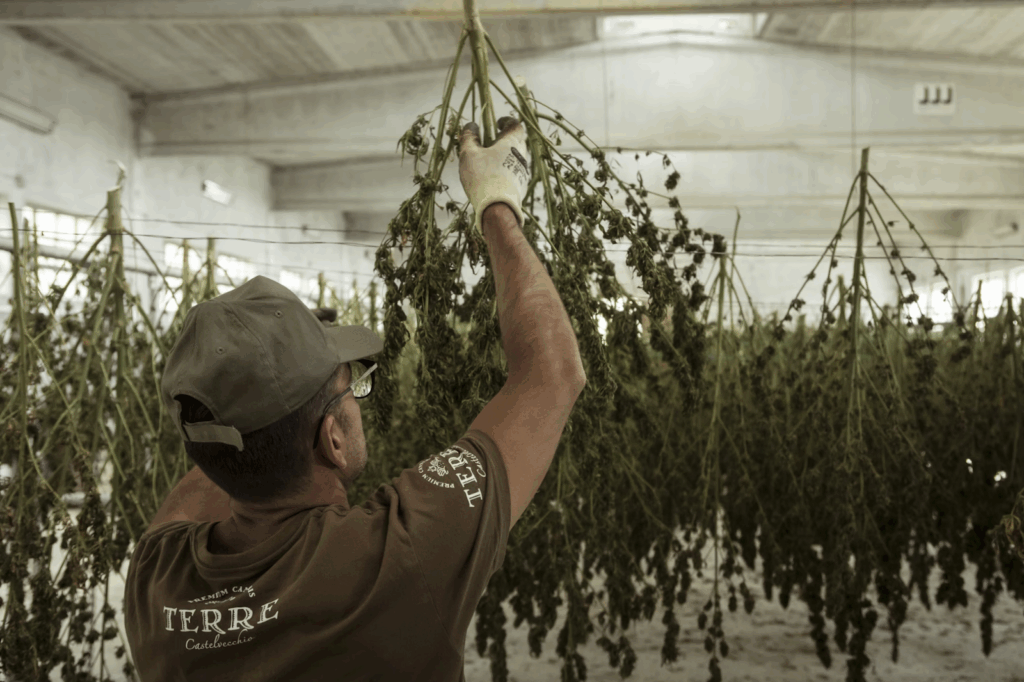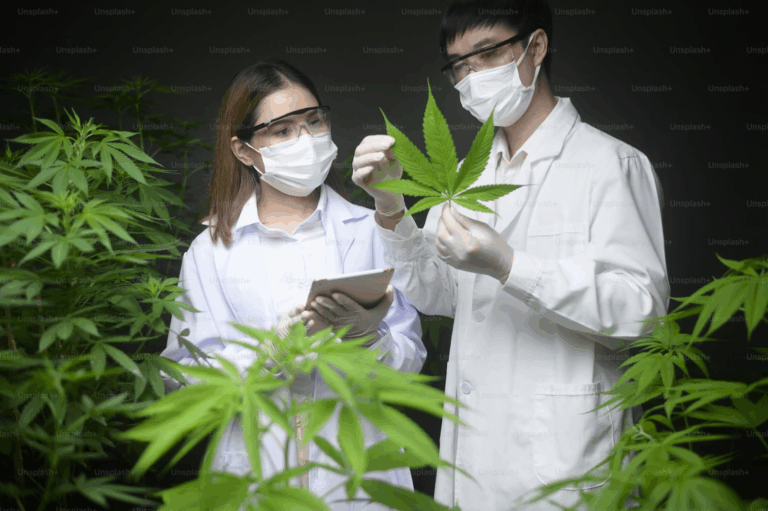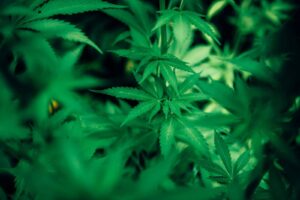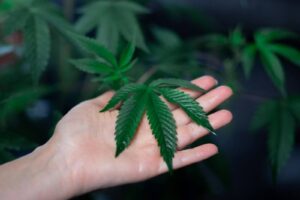Struggling to decide how to dry your freshly harvested cannabis? You’re not alone. Drying might seem like the easy part after the hard work of growing, but it’s one of the most important steps for preserving everything you’ve worked for, such as the plant’s aroma, flavor, and potency.
But how exactly should you handle this critical step? This one big question always comes up, becoming a common source of confusion for many cannabis harvesters, making them wonder whether to hang the whole plant or cut it into individual branches for drying.
If you go the wrong way, then there is a risk losing fragnance, drying unevenly, or even inviting mold. But if you get it right, then you will be able to prevent all these from happening. In this article you are going to learn how to dry cannabis, pros and cons of hanging whole cannabis plants versus drying individual branches.
Let’s explore the cannabis drying process below to protect the quality of your harvest and make sure your hard work pays off.
What is Cannabis Drying and How to Do It?
Cannabis drying is a important part of the cultivation process that directly impacts the quality, potency, and flavor of the final product. After harvesting cannabis, whether for medicinal or recreational use, drying helps preserve the plant’s cannabinoids, terpenes, and overall integrity. If done improperly, the drying process can lead to mold, loss of potency, and an unpleasant smoking or consumption experience.
Drying removes excess moisture from the plant to ensure it is properly cured and ready for consumption, extraction, or storage. There are different methods for drying cannabis, and the method chosen can significantly affect the outcome. Growers can either dry cannabis by hanging the whole plant or drying individual branches or buds.
Each approach has pros and cons, and the right method depends on the grower’s space, equipment, and desired harvest outcome. Below, you will explore the pros and cons of hanging whole plants and individual plants.
Pros and Cons of Hanging a Whole Cannabis Plant
When it’s time to dry-harvest cannabis, choosing from the two choices of hanging the entire plant or just cutting and drying smaller branches can be difficult, but this very decision affects how your buds taste, smell, and perform in the end.
Let’s break down the benefits and downsides of hanging a whole cannabis plant.
Pros of Hanging a Whole Cannabis Plant
Hanging a whole cannabis plant to dry is a traditional method widely used by many growers. This technique helps preserve the plant’s natural compounds by minimizing handling, which reduces the risk of trichome loss.
1. Keeps the Smell and Flavor Strong
Hanging a whole cannabis plant helps protect the Terpenes, the natural oils that give cannabis its unique smell and taste. If the plant is broken down too soon, terpenes can fade away quickly, so keeping the plant whole helps lock in that aroma and flavor.
2. Less Touching Means Less Damage
The fewer times you touch the buds, the better it will be. Drying the whole plant means you don’t have to touch individual flowers as much, which helps keep the trichomes (where the THC and fragrance live) in great shape.
3. More Even Drying
When the entire plant hangs together, it dries more evenly. Each part of the plant gets the same air, humidity, and temperature, helping the buds dry at the same speed.
4. Simple to Do
This method is easier for beginners. Once the plant is cut, you just hang it upside down in a dry, ventilated space and no extra steps or gear needed.
5. Balanced Cannabinoid Levels
Drying the whole plant can help the THC and other cannabinoids stay balanced throughout the plant. This gives you a smoother, more consistent product in the end.
While hanging a whole cannabis plant offers several advantages, it’s not without its challenges. Let’s look at some potential downsides to help make better decisions.
Cons of Hanging a Whole Cannabis Plant
This method also carries some drawbacks, such as slowing down the drying process and introducing risks if not managed carefully. Here are some of the common downsides to be aware of:
1. Risk of Mold
Big plants with lots of leaves can trap moisture, especially in thick buds. If your drying space doesn’t have good airflow or the humidity is too high, mold can grow. That’s why ventilation is key.
2. Slower Drying Time
Whole plants take longer to dry because they’re bulkier and hold more moisture. If you’re in a hurry to cure or use your buds, this might slow you down.
3. Takes Up a Lot of Space
Hanging full plants needs more room. If your drying area is small, fitting several plants might be tough. Overcrowding also blocks airflow and raises mold risks.
4. Hard to Check Dryness
It’s not easy to tell how dry individual branches are when the whole plant is hanging. Some parts may dry faster than others, which can cause uneven results. You may have to move things around or adjust airflow.
5. Bacteria Can Grow in Wet Spots
If thick buds or leaves hold onto water, it can create damp spots it will be perfect for bacteria to grow. Without enough air circulation or humidity control, this could harm your final product.
Drying the whole cannabis plant can be a great method, especially for keeping flavor and quality high. But it’s important to have good airflow, space, and patience. If done right, it can lead to smoother, tastier buds that your customers or patients will love.
The drying process can be a make-or-break stage for your cannabis crop. If you’re facing the difficulties of drying whole plants and facing problems like managing space, ensuring airflow, or avoiding mold. Then don’t worry, PlanaCan offers an effective solution.
PlanaCan’s Harvest Analysis and Reporting tool gives you the data you need to refine your drying process and improve your results. By tracking each harvest’s conditions and outcomes, you can identify successful methods, eliminate past mistakes, and create more efficient workflows for better results.
Now, let’s explore the alternative method of drying cannabis by hanging individual branches. This approach has its own set of pros and cons, which you will learn below.
Pros and Cons of Hanging Individual Branches

Drying cannabis involves cutting the plant into smaller sections and hanging each branch separately to dry. While this method has its advantages, it also comes with some challenges. Let’s first explore its advantages below!
Pros of Hanging Individual Cannabis Branches
Hanging individual branches to dry cannabis gives more control over the drying environment. This approach allows for efficient use of space, improved airflow, and easier monitoring of buds throughout the process.
1. Better Airflow and Even Drying
Hanging branches separately helps air circulate around each bud, promoting even drying and lowering the risk of mold or mildew.
2. Space-Saving
This method works well for growers with limited drying space, allowing them to use the available area more efficiently.
3. Easier to Monitor
It’s simpler to check the drying progress of each branch, so you can adjust environmental conditions when needed.
4. Faster Drying Time
Drying individual branches generally results in faster drying times. With better airflow and reduced mass, moisture evaporates more efficiently from the buds, speeding up the process.
With many benefits, there also exist some potential challenges, which are important to consider. Below, you will learn some of them.
Cons of Hanging Individual Cannabis Branches
Though this method offers better control and faster drying, it also comes with a few trade-offs. Handling each branch separately can add extra steps to the process and pose a risk to delicate parts of the plant.
Let’s look at the key challenges growers face when drying branches individually:
- More Time and Effort: Cutting and hanging each branch individually takes more time and effort than drying the whole plant.
- Risk of Trichome Loss: Handling individual branches increases the risk of losing trichomes, which hold cannabinoids and terpenes, potentially affecting the potency and smell of your cannabis.
- Uneven Drying: Without careful attention, smaller buds may dry too quickly and become harsh, while larger buds may retain too much moisture, leading to mold.
Hanging individual branches can provide benefits like better airflow and space efficiency, but it requires more work and attention to ensure even drying. Growers should consider their specific situation and resources when choosing the best drying method for their cannabis.
Drying individual branches can be time-consuming and detail-oriented for you, especially when managing multiple harvest cycles. So if you’re struggling to keep track, PlanaCan is here to help.
PlanCan’s automated software is designed in a way that streamlines your entire harvest cycle, from plant care to drying. With smart scheduling tools, automated workflows, and real-time task updates, you can stay organized and ensure nothing slips through. Plus, PlanaCan’s reporting feature helps you analyze each harvest cycle, giving you the insights you need to improve your methods and boost productivity.
Preparation and Equipment for Drying
Before you begin the drying process, it’s essential to have the right setup and tools. This will not only help preserve your buds’ potency and flavor but also protect them from mold, over-drying, and other issues that can affect quality.
- Drying Area: You’ll need a dedicated, environmentally controlled space to dry your cannabis. This area should be dark, well-ventilated, and equipped to maintain ideal temperature and humidity. Without proper control, you risk drying your buds too quickly or too slowly, leading to harsh flavor or mold growth.
- Hanging Equipment: The most common method for drying involves hanging 12–16-inch branches upside down using string or wire. This allows air to circulate around the buds evenly, encouraging slow, consistent drying. If your space is limited or humidity is high, you may instead opt to trim buds from branches and place them on a drying rack to help them dry faster.
- Drying Racks: Dry racks are ideal for humid environments or when working with individual buds instead of branches. However, racks can sometimes compress or flatten the buds, so handle them gently and ensure even spacing to maintain structure and airflow.
- Containers for Curing: Once drying is complete, you’ll transfer your buds to curing containers. While Mason jars are commonly used, turkey oven bags are often preferred. They’re cheaper, hold more (over a pound), and allow for better airflow, which helps regulate humidity levels and prevent over-curing.
- Hygrometers: These small devices monitor the humidity inside your curing containers, helping you stay within the optimal range of 50–60% relative humidity. They’re especially useful if you’re growing in a climate where humidity fluctuates or if you’re using airtight containers like Mason jars.
- Humidity Control Packs: Optional but highly recommended, humidity packs such as Boveda 62% can help maintain a consistent humidity level inside your containers. They’re instrumental in dry environments or for growers looking to rehydrate buds that have dried out too much.
With these major tips about drying cannabis covered, let’s look into the important section below, which is about environment considerations.
Environmental Considerations
The drying process is highly sensitive to external factors such as temperature, humidity, airflow, and light exposure. These environmental conditions can significantly influence the final quality of your buds, including their taste, potency, and overall appearance.
Let’s take a closer look at the key environmental factors that every grower should consider during the drying process.
1. Temperature and Humidity Control
- The ideal temperature range for a cannabis drying room is between 55 and 65 degrees Fahrenheit (12.8-18.3°C).
- Relative humidity should be kept between 50% and 60%. Both temperature and humidity need to be consistent and well-controlled to avoid overdrying or mold growth.
- Equipment should be designed to maintain the temperature and humidity within precise limits, typically no more than 1 degree Celsius or 3% humidity variance.
2. Airflow
- Proper airflow is crucial for uniform drying. Both vertical and horizontal airflow are needed, but fans should not blow directly on the plants to prevent too-rapid drying.
- Air filtration systems are also essential to maintain a sterile environment and minimize contaminants.
3. Water Activity and Moisture Content
- Cannabis starts with approximately 80% water content and needs to be reduced to 10-14% moisture for optimal quality.
- Water activity, a measure of the free moisture available for microbial growth, should be controlled to below 0.60 to prevent mold and fungus.
4. Drying Room Uniformity
- Ensuring uniform drying across the room is critical. Uneven moisture content in different areas of the room can lead to inconsistent product quality.
- Proper airflow, distribution of plant material, and room design are essential to achieving uniform drying.
5. Trimming Area Considerations
- The trimming area should maintain the same environmental conditions as the drying room to avoid moisture fluctuations that could negatively impact the flower.
To maintain stability and protect against moisture fluctuations that could negatively impact flower quality, it’s essential to go beyond just monitoring the environment. Using the right tools can actively enhance drying efficiency and help you maintain consistent conditions throughout the process.
Equipment to Enhance Drying Efficiency
- WavDri Trays: Designed for efficient drying with airflow enhancement and anti-mold technology, perfect for commercial drying rooms.
- Moisture Analyzers: These are used to monitor the exact moisture content of cannabis flowers and ensure precise drying times, preventing weight loss and optimizing the process.
- Custom Shelving: This is for maximizing space utilization, especially in large drying operations.
By preparing the right space and equipment before you begin drying, you’ll avoid common pitfalls and set yourself up for a smooth drying and curing process that ultimately will result in higher quality cannabis. Now, let’s explore some tips for effective drying.
Tips for Effective Drying
Even with the right tools and equipment in place, successful drying still depends on careful daily management. Adopting a few best practices can make all the difference in preserving potency, preventing contamination, and achieving a smooth, flavorful finish.
- Prevent Overcrowding: Ensure adequate space between plants or branches to allow proper airflow. Overcrowding can trap moisture and increase the risk of mold.
- Regular Monitoring: Check your drying area daily for signs of mold, mildew, or uneven drying. Make small adjustments to airflow, humidity, or spacing as needed.
- Maintain Consistent Temperature: Keep the drying area at an optimal temperature—ideally between 60°F and 70°F (15°C and 21°C). Too much heat can cause the plant to dry too quickly, degrading the quality, while too cold a temperature can slow down the process, leading to uneven drying.
- Control Humidity: Aim to maintain a relative humidity level of around 50-60%. Too high humidity can lead to mold growth, while too low can dry the cannabis too fast, affecting its flavor and potency.
By following these tips, you’ll create an environment that encourages even, slow drying, helping to preserve the quality and potency of your cannabis harvest.
Case Study: Garden First Cannabis, an Oregon-based grower, was facing growing pains as its business expanded. Despite a strong start with a close-knit team and high-quality cultivation, scaling their operation introduced challenges like missed work, incorrect treatments, and frustrated employees. Seeking a better solution, Andreas Hero, the co-founder, turned to PlanaCan, a software designed to streamline cultivation management.
Andreas saved significant time, going from spending 6-8 hours a week on scheduling to just one hour. In total, the team saved 15 payroll hours per week. Beyond time savings, PlanaCan provided Garden First with better insights into their operations. With detailed data on each harvest, they could pinpoint inefficiencies and improve their overall productivity and yields.
Conclusion
Choosing the proper drying method for your cannabis requires balancing space, time, and quality needs. Whether you opt for traditional hang drying or more space-efficient methods like wet trimming and tray drying, each approach offers distinct advantages depending on your facility’s size and operational goals. Understanding these methods allows cultivators to make more informed decisions, ensuring that the drying process enhances the harvest’s quality and profitability.
For commercial growers like you who want to scale their cannabis harvesting operation confidently, PlanaCan offers a purpose-built cultivation software platform designed to eliminate guesswork and inefficiencies. With automated work scheduling, an interactive calendar, and intuitive team management tools, PlanaCan replaces whiteboards, spreadsheets, and miscommunications with a centralized system accessible across devices.
By streamlining workflows, tracking every cultivation stage, and delivering detailed harvest analysis, PlanaCan empowers cannabis operations to optimize yields, enhance collaboration, and drive profitability.
Schedule a free call today to see how it can elevate your cannabis operation.




